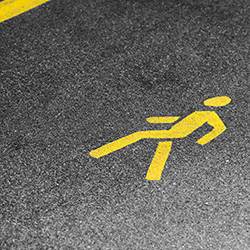Traffic calming measures are essential tools in urban planning and road safety, aimed at reducing vehicle speeds, minimizing accidents, and improving the overall quality of life in neighborhoods. These measures are becoming increasingly innovative, integrating new technologies and holistic approaches to address the diverse needs of urban environments. Here, we explore some of the latest advancements and strategies in traffic calming, highlighting their benefits and implementation challenges.
Understanding Traffic Calming
Traffic calming involves a variety of physical and strategic interventions designed to improve road safety and enhance the environment for non-motorized users, such as pedestrians and cyclists. The primary goals include:- Reducing vehicle speeds.
- Minimizing collision frequency and severity.
- Increasing safety and perception of safety for all road users.
- Enhancing the street environment.
- Promoting alternative modes of transportation like walking, cycling, and public transit (Institute of Transportation Engineers).
Traditional Measures and Their Evolution
Traditional traffic calming measures include speed humps, roundabouts, chicanes, and road narrowings. These interventions have proven effective in reducing speeds and enhancing safety. However, the evolution of these measures is driven by the need for greater efficiency, adaptability, and integration with modern urban planning principles.- Vertical Deflections: Speed humps and raised intersections are classic examples. These measures force drivers to slow down, thereby reducing speed-related accidents.
- Horizontal Shifts: Chicanes and lateral shifts cause vehicles to change direction, naturally reducing speed. These are particularly effective in residential areas where maintaining a pleasant and safe environment is crucial.
- Road Narrowings: By reducing the width of travel lanes, drivers are encouraged to slow down, making streets safer for pedestrians and cyclists. This can be achieved through the addition of bike lanes, wider sidewalks, or landscaping.
Innovative Approaches
The latest innovations in traffic calming incorporate advanced technology and holistic urban design concepts to create safer and more livable cities. Here are some cutting-edge measures being implemented globally:- Smart Crosswalks: Cities like Funchal in Portugal and Tallinn in Estonia are experimenting with intelligent crosswalks that use LED lights and sensors to alert drivers to the presence of pedestrians. These systems enhance visibility and safety, particularly in areas with high foot traffic and poor lighting.
- Active Speed Bumps: These dynamic devices adjust their height based on the speed of approaching vehicles. If a car is speeding, the bump raises to enforce speed reduction; if the vehicle is within the limit, the bump remains flat, allowing smooth passage. This technology targets only speed violators, making it a fair and effective solution.
- Low Emission Zones (LEZs): Cities like Brussels and London are implementing LEZs to limit access for high-polluting vehicles. These zones not only reduce traffic speeds but also improve air quality and promote sustainable transportation methods .
- Superblocks: Barcelona’s superblocks initiative reorganizes traffic flow by restricting through traffic within designated blocks, prioritizing pedestrian and cycling infrastructure. This approach not only calms traffic but also reclaims public space for community activities and green areas.
- Green School Travel Programs: In Ireland, the Green Schools Travel National Programme involves students in auditing and advocating for traffic calming measures around schools. This program promotes sustainable mobility and engages the community in creating safer routes for children.
Implementation Challenges
Implementing innovative traffic calming measures comes with several challenges. Gaining political and social acceptance is often the most significant hurdle. People may resist changes to their usual travel patterns, and political shifts can affect long-term planning. To overcome these challenges, urban planners emphasize the importance of stakeholder engagement, clear communication of benefits, and the demonstration of successful case studies.- Stakeholder Engagement: Involving community members in the planning process ensures that their needs and concerns are addressed. This can be achieved through public consultations, surveys, and pilot programs.
- Clear Communication: Educating the public on the benefits of traffic calming measures, such as improved safety and environmental quality, is crucial. Transparent communication helps build trust and support.
- Demonstration Projects: Pilot projects and temporary installations allow communities to experience the benefits of traffic calming measures firsthand. Successful pilots can pave the way for permanent solutions.
- Holistic Approach: Integrating traffic calming into broader urban planning and sustainability strategies ensures that these measures complement other city goals, such as reducing carbon emissions and enhancing public spaces.

